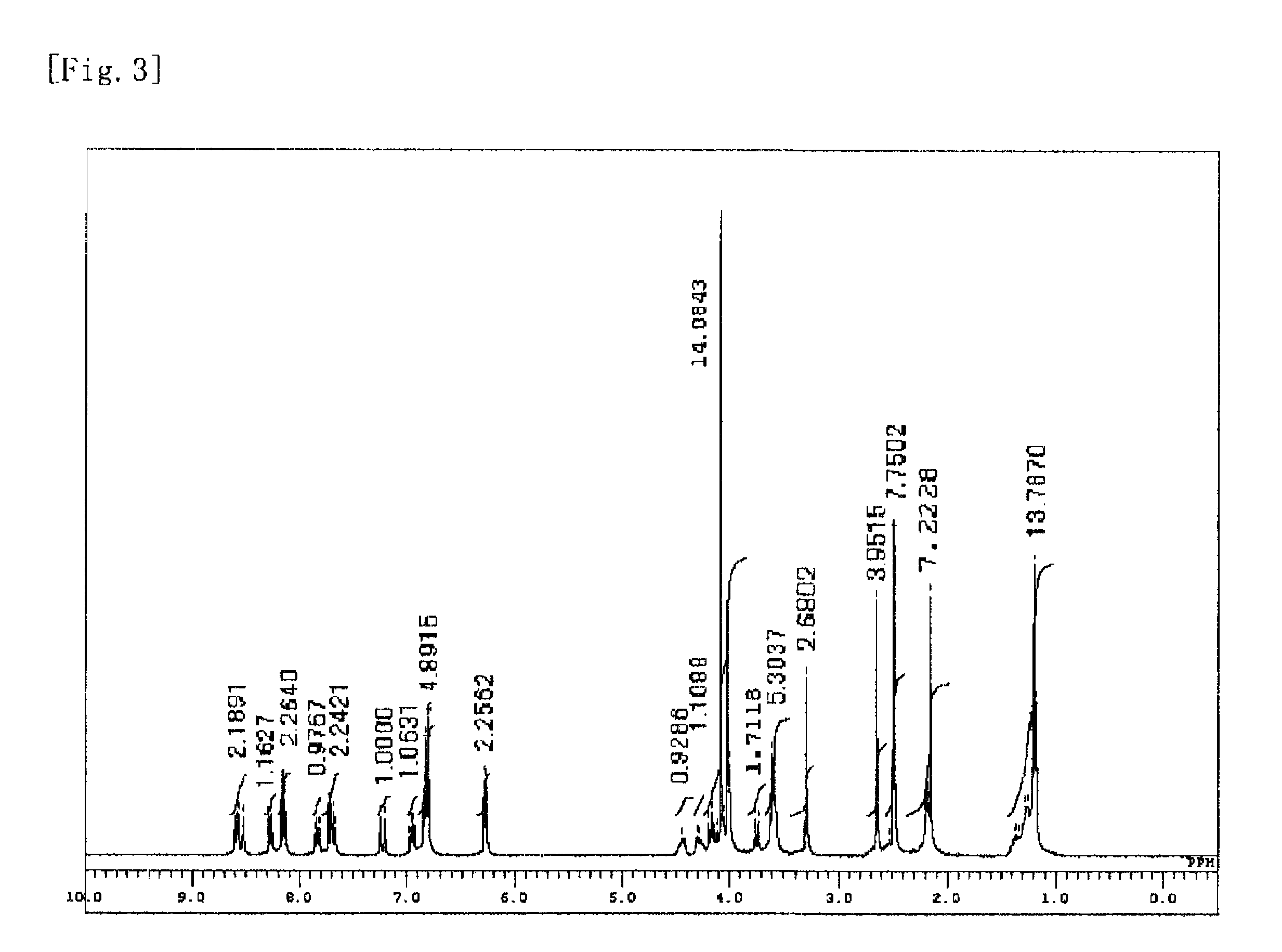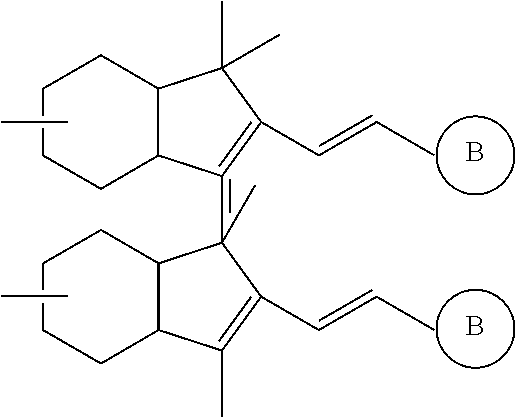Indolium compound and optical recording material
a technology of compound and optical recording, applied in mechanical recording, instruments, thermography, etc., can solve the problems of unsatisfactory light stability and recording characteristics of materials, and achieve the effect of high light resistan
- Summary
- Abstract
- Description
- Claims
- Application Information
AI Technical Summary
Problems solved by technology
Method used
Image
Examples
examples
[0072]Hereafter, the present invention will be described in more detail in terms of Manufacturing Examples, Examples, and Evaluation Examples. However, the present invention will not be limited in any way by the following Examples and the like.
[0073]The following Manufacturing Example Nos. 1 to 3 show examples of manufacture of indolium compound Nos. 1 to 3, each represented by the general formula (I).
[0074]Further, the following Examples 1 to 4 show examples of preparation of optical recording materials comprising compound Nos. 1 to No. 3 each obtained in the Manufacturing Example Nos. 1 to 3 respectively. The Examples also show the manufacturing examples of the optical recording media Nos. 1 to 3 sing the optical recording materials.
[0075]The following Comparative Examples 1 and 2 show examples of preparation of the comparative optical recording materials using indolium compounds having different structures from those represented by the general formula (I) and manufacturing exampl...
manufacturing examples 1 to 4
Manufacture of Hexafluorophosphate Salts of Indolium Compound Nos. 1 and 3, and Perchlorate Salts of Compound Nos. 2 and 73
[0077]Using the synthetic method described below, indolium compound Nos. 1 to 3 and No. 73 were synthesized. The compounds obtained were identified by 1H-NMR analysis. The analytical results of compound Nos. 1 to 3 are shown in [FIG. 1] to [FIG. 3], respectively. In [Table 1] are also shown the yields of the compounds obtained and the results of measurement of the characteristic values [light absorption properties of solutions (λmax and ε at λmax), decomposition point].
[0078]It is noted that, in [Table 1], the decomposition point refers to the temperature in the differential thermal analysis performed at a heating rate of 10° C. / min., whereat the mass of the sample begins to decrease.
(Synthetic Method) Synthesis of Indolium Compound Nos. 1 to 3 and No. 73
Synthesis of Aldehyde Derivative
[0079]To a reaction flask purged with nitrogen was charged 0.8 mol of dimeth...
examples 1 to 3
[0084]The indolium compound Nos. 1 to 3 obtained in the Manufacturing Examples 1 to 3 were each dissolved in 2,2,3,3-tetrafluoropropanol in a concentration of 1.0% by mass to obtain the optical recording materials as solutions. The optical recording material was spin coated on a polycarbonate disc substrate of 12 cm diameter to form a 100 nm thick optical recording layer, the disc having been provided with a foundation layer (0.01 μm) by coating a titanium chelate compound (T-50: manufactured by Nippon Soda Co., Ltd.), followed by hydrolysis. Thus were obtained the respective optical recording media Nos. 1 to 3.
PUM
| Property | Measurement | Unit |
|---|---|---|
| Ri | aaaaa | aaaaa |
| thickness | aaaaa | aaaaa |
| thickness | aaaaa | aaaaa |
Abstract
Description
Claims
Application Information
 Login to View More
Login to View More - R&D
- Intellectual Property
- Life Sciences
- Materials
- Tech Scout
- Unparalleled Data Quality
- Higher Quality Content
- 60% Fewer Hallucinations
Browse by: Latest US Patents, China's latest patents, Technical Efficacy Thesaurus, Application Domain, Technology Topic, Popular Technical Reports.
© 2025 PatSnap. All rights reserved.Legal|Privacy policy|Modern Slavery Act Transparency Statement|Sitemap|About US| Contact US: help@patsnap.com



